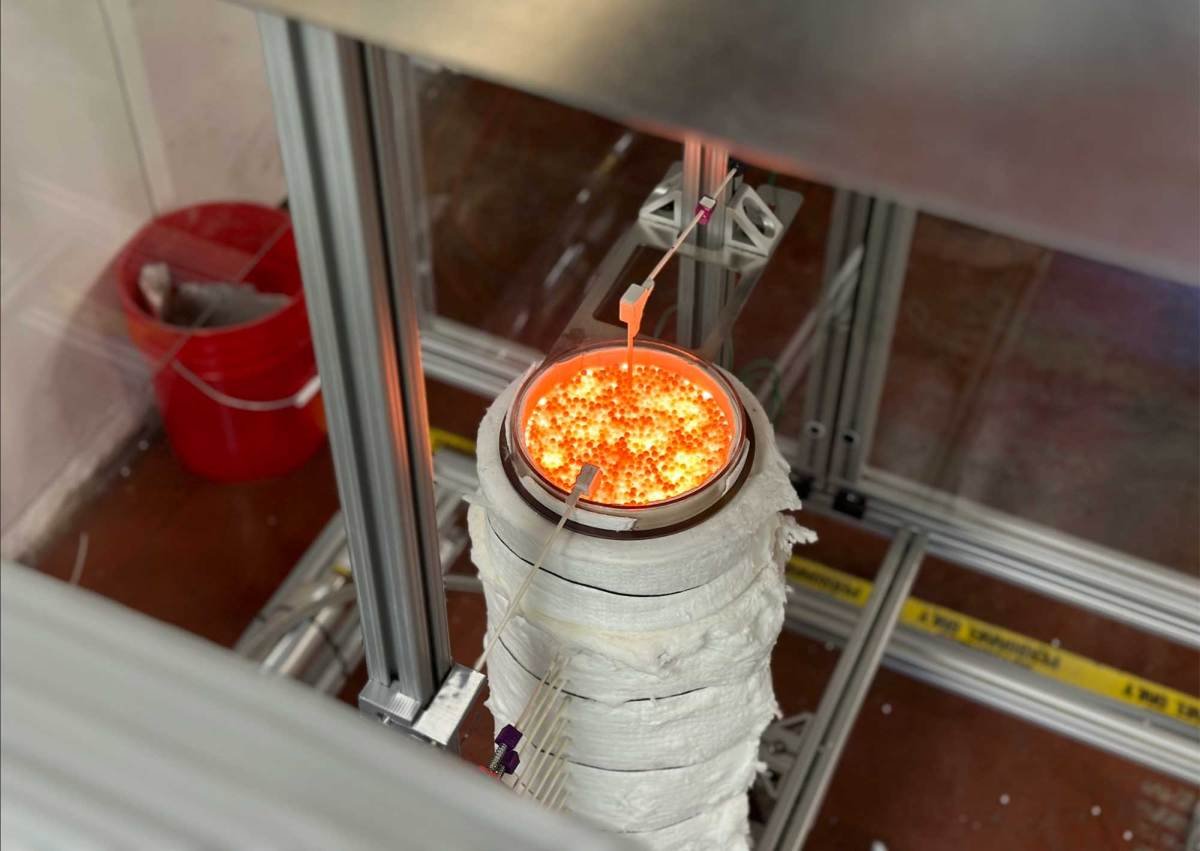The process of cement production has been a major source of carbon dioxide emissions, with approximately 600 kilograms of the gas being released into the atmosphere for every 1000 kilograms of cement produced.
This may not seem like much, but when we consider that the world made 4.2 billion metric tons of cement last year, which accounts for 8% of all carbon pollution, it becomes clear that this is a significant issue that needs to be addressed.
For Gurinder Nagra, a graduate student at Stanford University, this was a concern that weighed heavily on his mind. While his PhD focused on carbon capture and storage, he couldn’t stop thinking about the impact of cement production on the environment. In fact, he even took a class on energy ventures multiple times, and every time, the focus was on cement, as he shared with TechCrunch.
It wasn’t just the pollution that bothered Nagra, but also the fact that the cement industry is often overlooked and considered a necessary evil in modern civilization. However, he believed that making a change in this industry could have far-reaching effects beyond just reducing carbon emissions. As he stated, “The companies that control the supply of cement in the background run the world almost. Not so much as the oil industry, but they have a lot of power.
It costs a billion dollars to build a new plant, and if a company decides to build a plant in a developing economy or a developing country, that company has control over the destiny of the trajectory of that developing economy.”
So, after completing his degree in 2020, Nagra founded Furno with a simple yet ambitious goal: to revolutionize the cement industry.
In many developing countries, the cost of building a new cement plant is simply not feasible, leading them to import cement at much higher prices. As Nagra explained, “You find that, in a lot of developing economies, they actually pay more for cement than in developed economies, sometimes three to four times the market price.”
Furno’s solution is to develop smaller, more efficient, and more flexible cement kilns than the massive ones currently in use by the industry. While each unit may produce less than the industry standard, they are cheaper to build and use less energy to run.
This goes against the trend in the cement industry, which has been focused on building larger and larger equipment for cost-cutting purposes. However, as Nagra points out, this has also led to each plant becoming custom-made, resulting in higher labor costs. By creating smaller kilns, Furno aims to lower costs through mass production and increase energy efficiency.
So, how does Furno’s smaller kiln work? The most commonly used type of cement, Portland cement, is produced by heating calcium-containing minerals, usually from limestone, to temperatures over 1,100 degrees Fahrenheit (600 degrees Celsius). This process, known as calcination, produces lime (calcium oxide) and carbon dioxide. While there are other steps involved, this is the most important one. The raw materials enter one end of the kiln, which is horizontal, and are pushed towards the other end, where they come out as clinker.
The problem is that current kilns are not very efficient. According to a study, only 30% of the heat in the kiln is used in the calcination process, while the rest is lost. As Nagra explains, “If you’re standing 40 feet away from a kiln, you can feel the heat dissipating out on the walls of the unit.”
In contrast, Furno’s kiln is far more efficient, reducing fossil fuel emissions by 70% or more. It does this by turning the kiln vertical and filling it with finely ground ingredients. A combustive gas, such as natural gas, biogas, or hydrogen, is then seeped through and ignited. By adjusting the flow of gas and oxygen, Furno can control where the flame occurs inside the kiln, ensuring that more of the heat is used for calcination instead of being lost. This also means reduced fuel consumption and lower emissions. Raw materials continuously enter the top of the kiln, and clinker is produced at the bottom.
Additionally, the ability to control the flame front inside the kiln gives Furno the opportunity to use recycled cement from old concrete. Since the recycled cement has already undergone calcination, less fuel is needed in the kiln. And because Furno’s kilns are smaller, they can be used on construction sites to create new cement, reducing the need for transportation.
Furno’s innovative approach has caught the attention of ready-mix concrete companies, who are currently forced to purchase cement from vertically integrated companies. As Nagra puts it, “They have to buy cement from their competition, which doesn’t really make for a very fair market.” With Furno’s modular kilns, these companies can gain more control over their own destinies.
What makes Furno stand out from its competitors is its focus on improving the kilns and the software that controls them, rather than trying to change the chemical reaction itself. This could make it easier for Furno to sell their technology to an industry that is not used to change.
“A seed of change has been planted in the cement industry, and Furno is determined to make it grow into a flourishing green solution that benefits both the environment and developing economies.”
– TechCrunch








